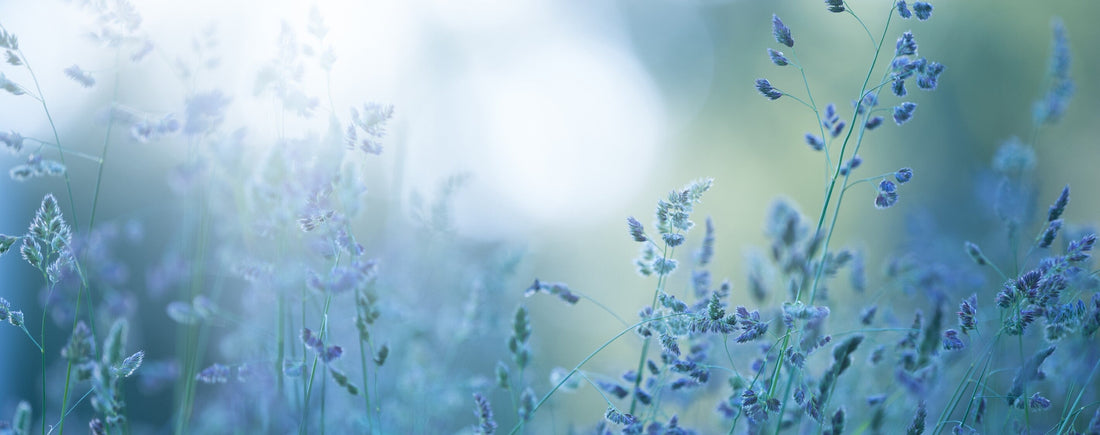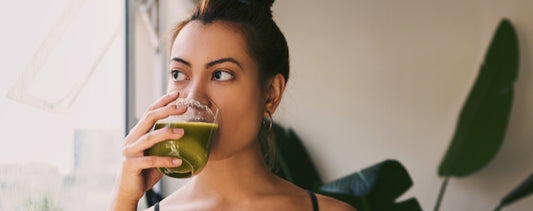Some people appear to be plugged into an endless supply of creative power while others struggle to light a small spark of imagination. If you fall into the latter category, you may have been told that creativity is a fixed trait and that you were allotted a specific, unchangeable amount at birth. Fortunately, those outdated notions have been disproven and current research reveals that imaginative ability is akin to a muscle that can be strengthened with proper use.
The following six ideas will help you find and flex your creative genius.
Walking encourages cerebral blood flow which prompts generalized creativity. Research from Stanford University revealed that creativity was bolstered by 60 percent by simply walking rather than sitting while brainstorming. When study participants were asked to generate alternative uses for household objects or analogies to encapsulate complex ideas, participants in the walking group significantly outperformed those in the sitting group.
In our high stimulus society, even individuals who have committed to a daily walk may plug in to music, podcasts, or books for entertainment during the walk. Though education and entertainment certainly have a place in life, for the purposes of bolstering creativity, it is far better to unplug from devices. Instead, try plugging into the earth with a thirty-minute earthing walk and see what inspiration follows.
Nothing shuts down creativity faster than a sleepless night. During sleep, your body shuttles memories of the day from one area of your brain, the hippocampus, to another, the neocortex. If the day’s events are not moved to the neocortex, they are forgotten. This process, known as memory consolidation, is pivotal to creativity since the majority of creative solutions stem from the reallocation of existing knowledge. Creativity is optimized when the brain can retrieve and apply information; both processes are enhanced through sleep.
Though you may have heard that the ideal amount of sleep is eight hours, a better indicator of your specific need can be determined by noting how many hours you need to stay in bed in order to wake without an alarm and feel refreshed. Refining your sleep hygiene by limiting blue light an hour before bed, maintaining a regular sleep/wake schedule, and finishing your last meal three hours before bedtime can greatly increase the quality of your sleep and consequently the number of hours you need to log in bed.
During the dream state, the subconscious mind actively works to solve problems that the conscious mind has not yet puzzled out. Many famous people have stumbled upon creative solutions, ideas, or inspirations in their dreams. From Paul McCartney’s hit song, “Yesterday” to Dmitri Mendeleev’s periodic table to Jack Nicklaus’s golf swing, dreamland is a place of inspiration and possibilities.
Researchers have found that during waking and non-rapid eye movement (REM) states information crosses primarily from the analytical left brain to the creative right brain. However, during REM sleep, information can travel both ways, indicating that creativity is not limited by the left brain’s methodical lens. People who may not consider themselves creative can actually access their imaginative nature via dreams.
To capture the magic of your dreams, try writing down a personal question, query, or problem in a journal just before bed. This process is known as pre-bedtime priming. Immediately upon awakening, recall your dreams or dream fragments. Record what you remember for later inquiry.
Creativity draws inspiration from the new. If you see the same sights, duplicate yesterday’s thoughts, and perform similar tasks every day, you will find your imaginative genius waning. To stimulate creative ideas, seek out novel experiences. As you mentally process diverse happenings, interact with different people, and absorb new information, a fresh perspective will emerge.
Oftentimes people get trapped in the thought that there is no time for the new. This seems logical when you have to drop kids at school, log in a certain number of hours at work, make dinner, and walk the dog every day. Yet, within each of those tasks are opportunities for novelty. You could make a picnic breakfast to eat at a park before dropping the kids at school, listen to a podcast during your lunch break, try a new recipe for dinner, or walk the dog along a different route. As time permits, expand your outings to include workshops, travel, and interesting events.
Color therapists suggest that colors have a strong impact on the human nervous system. A University of British Columbia study found that the color blue enhances creative thinking. "Through associations with the sky, the ocean, and water, most people associate blue with openness, peace, and tranquility," says Juliet Zhu of UBC's Sauder School of Business and author of the study. "The benign cues make people feel safe about being creative and exploratory.”
From a blue crystal placed on your desk to a mind-wandering gaze at the blue sky, bringing in the color blue is only one look away. To generate all-day creativity, try donning a blue shirt or energizing your throat chakra with a blue gemstone necklace.
Creativity is not a passive process. You can strengthen your right brain and imaginative powers by seeking new experiences, moving the body, prioritizing rest, tapping into the potential of dreams, and spending time under the blue sky, preferably while allowing the mind to wander. These activities will not only enhance your creativity, they will also add joy to your life.
Join Deepak Chopra and Roger Gabriel in a collection of guided visualizations that will help bring your dosha into balance, available now in the Chopra App under For You.
The following six ideas will help you find and flex your creative genius.
Take a Walk
Walking encourages cerebral blood flow which prompts generalized creativity. Research from Stanford University revealed that creativity was bolstered by 60 percent by simply walking rather than sitting while brainstorming. When study participants were asked to generate alternative uses for household objects or analogies to encapsulate complex ideas, participants in the walking group significantly outperformed those in the sitting group.
In our high stimulus society, even individuals who have committed to a daily walk may plug in to music, podcasts, or books for entertainment during the walk. Though education and entertainment certainly have a place in life, for the purposes of bolstering creativity, it is far better to unplug from devices. Instead, try plugging into the earth with a thirty-minute earthing walk and see what inspiration follows.
Get Ample Rest
Nothing shuts down creativity faster than a sleepless night. During sleep, your body shuttles memories of the day from one area of your brain, the hippocampus, to another, the neocortex. If the day’s events are not moved to the neocortex, they are forgotten. This process, known as memory consolidation, is pivotal to creativity since the majority of creative solutions stem from the reallocation of existing knowledge. Creativity is optimized when the brain can retrieve and apply information; both processes are enhanced through sleep.
Though you may have heard that the ideal amount of sleep is eight hours, a better indicator of your specific need can be determined by noting how many hours you need to stay in bed in order to wake without an alarm and feel refreshed. Refining your sleep hygiene by limiting blue light an hour before bed, maintaining a regular sleep/wake schedule, and finishing your last meal three hours before bedtime can greatly increase the quality of your sleep and consequently the number of hours you need to log in bed.
Recall Your Nightly Dreams Upon Awakening
During the dream state, the subconscious mind actively works to solve problems that the conscious mind has not yet puzzled out. Many famous people have stumbled upon creative solutions, ideas, or inspirations in their dreams. From Paul McCartney’s hit song, “Yesterday” to Dmitri Mendeleev’s periodic table to Jack Nicklaus’s golf swing, dreamland is a place of inspiration and possibilities.
Researchers have found that during waking and non-rapid eye movement (REM) states information crosses primarily from the analytical left brain to the creative right brain. However, during REM sleep, information can travel both ways, indicating that creativity is not limited by the left brain’s methodical lens. People who may not consider themselves creative can actually access their imaginative nature via dreams.
To capture the magic of your dreams, try writing down a personal question, query, or problem in a journal just before bed. This process is known as pre-bedtime priming. Immediately upon awakening, recall your dreams or dream fragments. Record what you remember for later inquiry.
Seek Novel Experiences
Creativity draws inspiration from the new. If you see the same sights, duplicate yesterday’s thoughts, and perform similar tasks every day, you will find your imaginative genius waning. To stimulate creative ideas, seek out novel experiences. As you mentally process diverse happenings, interact with different people, and absorb new information, a fresh perspective will emerge.
Oftentimes people get trapped in the thought that there is no time for the new. This seems logical when you have to drop kids at school, log in a certain number of hours at work, make dinner, and walk the dog every day. Yet, within each of those tasks are opportunities for novelty. You could make a picnic breakfast to eat at a park before dropping the kids at school, listen to a podcast during your lunch break, try a new recipe for dinner, or walk the dog along a different route. As time permits, expand your outings to include workshops, travel, and interesting events.
Surround Yourself With Blue
Color therapists suggest that colors have a strong impact on the human nervous system. A University of British Columbia study found that the color blue enhances creative thinking. "Through associations with the sky, the ocean, and water, most people associate blue with openness, peace, and tranquility," says Juliet Zhu of UBC's Sauder School of Business and author of the study. "The benign cues make people feel safe about being creative and exploratory.”
From a blue crystal placed on your desk to a mind-wandering gaze at the blue sky, bringing in the color blue is only one look away. To generate all-day creativity, try donning a blue shirt or energizing your throat chakra with a blue gemstone necklace.
Creativity is not a passive process. You can strengthen your right brain and imaginative powers by seeking new experiences, moving the body, prioritizing rest, tapping into the potential of dreams, and spending time under the blue sky, preferably while allowing the mind to wander. These activities will not only enhance your creativity, they will also add joy to your life.
Join Deepak Chopra and Roger Gabriel in a collection of guided visualizations that will help bring your dosha into balance, available now in the Chopra App under For You.






















